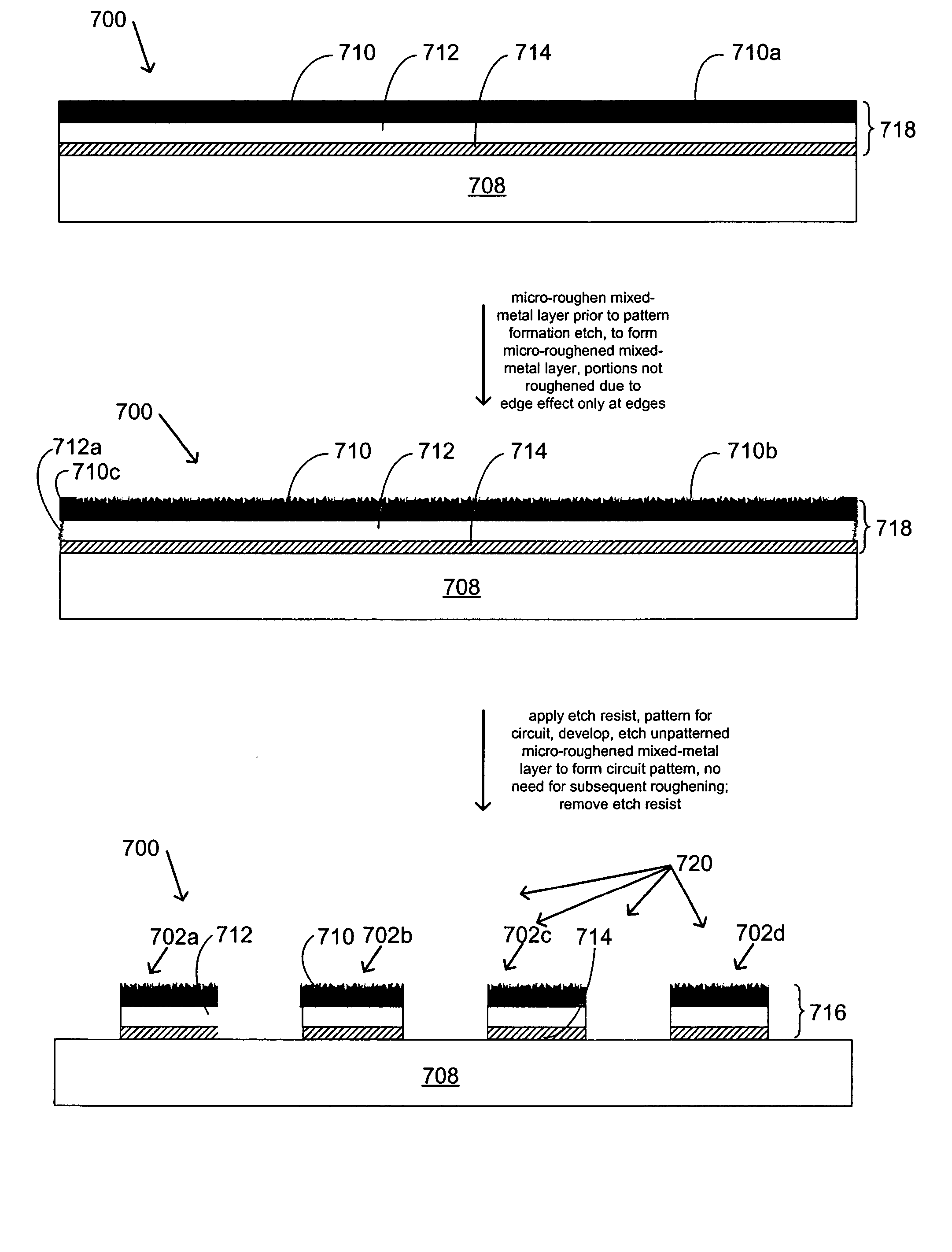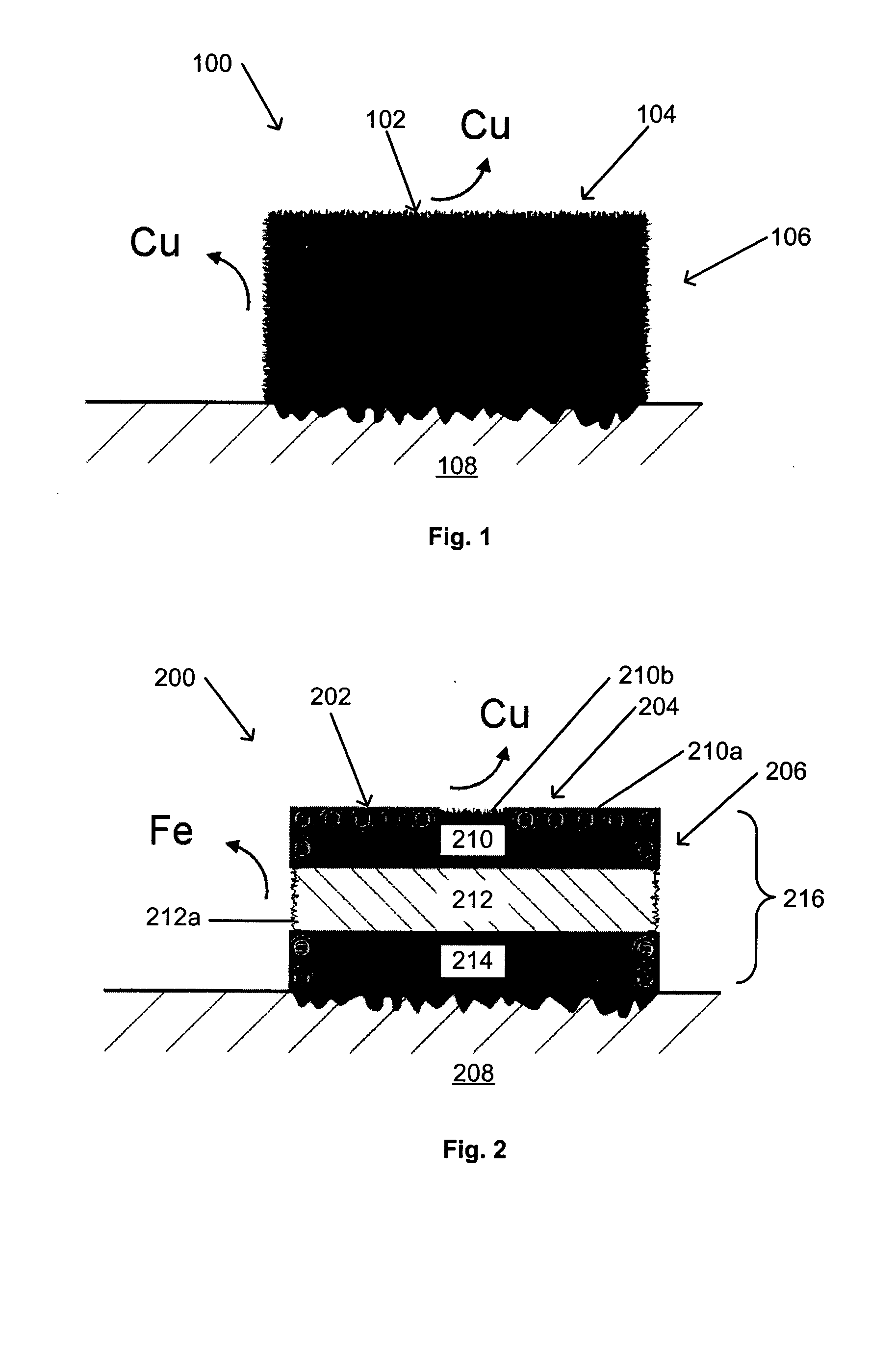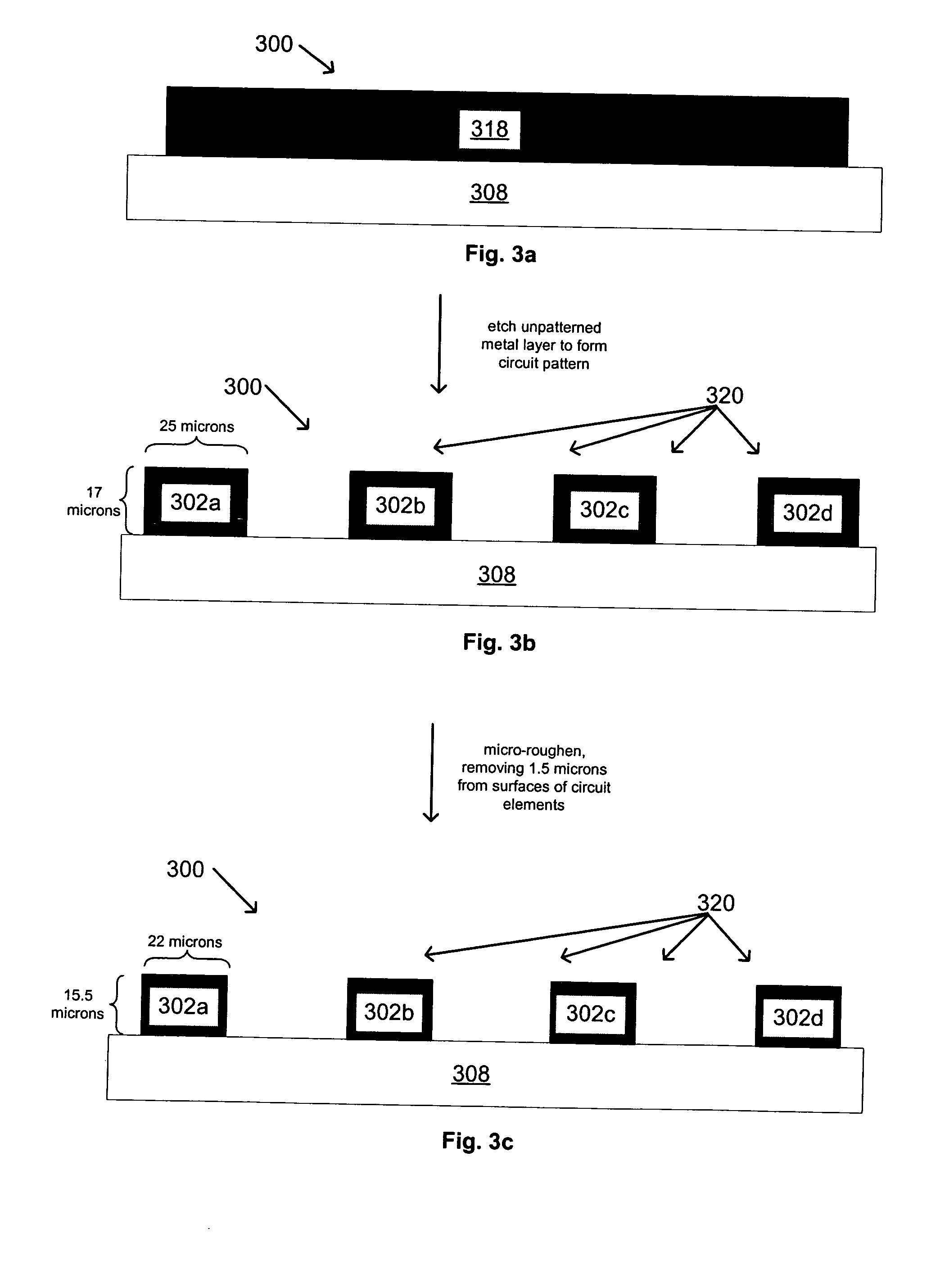Method for micro-roughening treatment of copper and mixed-metal circuitry
a technology of mixed metals and metal layers, which is applied in the direction of printed circuit manufacturing, printed circuit aspects, and the improvement of the adhesion of metals to the insulating substrate, etc. it can solve the problems of unbalanced etching effect of mixed metal layers, unbalanced etching of copper micro-roughening, and inability to properly micro-roughen copper in the area of circuit elements adjacent to the mixed metal interface, so as to enhance the adhesion properties of metal patterns
- Summary
- Abstract
- Description
- Claims
- Application Information
AI Technical Summary
Benefits of technology
Problems solved by technology
Method used
Image
Examples
first embodiment
In the first embodiment, the invention relates to a process to improve adhesion of dielectric materials to a metal layer, including providing an unpatterned metal layer having a first major surface; micro-roughening the first major surface to form a micro-roughened surface; and etching the metal layer to form a circuit pattern in the metal layer, in which the micro-roughening is carried out prior to the etching. In one embodiment, prior to the micro-roughening, no surface treatment to increase the roughness of the metal layer is carried out. In one embodiment, no further surface treatment to increase the roughness of the metal is carried out subsequent to the etching to form the circuit pattern.
In the second embodiment, the invention relates to a process to improve adhesion of dielectric materials to a metal layer, comprising: a. providing an unpatterned metal layer having a first major surface; b. micro-roughening the unpatterned metal layer with a solution to form a micro-rough...
third embodiment
In the present invention, additional steps are included, specifically, a dielectric material layer is applied, and optionally, a metal layer may be applied to further enhance adhesion to the dielectric material.
The steps (a)-(f) of the third embodiment may be substantially the same as those described above with respect to the second embodiment.
In the next step (h) of the third embodiment of the process of the present invention, a dielectric material layer is applied to the micro-roughened surface of the circuit pattern. After rinsing and drying, the patterned circuit is ready for dielectric application. The surface is already appropriately micro-roughened to have reliable adhesion to dielectric material. However, certain dielectric materials which exhibit poor adhesion to copper may show improved adhesion when a secondary metal is applied by chemical reaction to the surface of the micro-roughened copper. For example, a thin layer of tin may be applied to the copper surface using ...
PUM
| Property | Measurement | Unit |
|---|---|---|
| pKa | aaaaa | aaaaa |
| surface roughness | aaaaa | aaaaa |
| temperatures | aaaaa | aaaaa |
Abstract
Description
Claims
Application Information
 Login to View More
Login to View More - R&D
- Intellectual Property
- Life Sciences
- Materials
- Tech Scout
- Unparalleled Data Quality
- Higher Quality Content
- 60% Fewer Hallucinations
Browse by: Latest US Patents, China's latest patents, Technical Efficacy Thesaurus, Application Domain, Technology Topic, Popular Technical Reports.
© 2025 PatSnap. All rights reserved.Legal|Privacy policy|Modern Slavery Act Transparency Statement|Sitemap|About US| Contact US: help@patsnap.com



